THE ANIME GALAXY: JAPANESE ANIMATION AS NEW MEDIA
The ubiquitous nature of digital technology has had globalization and contents sharing promoted by common interest as an aftermath. Nowadays, it seems hard to think about the Internet without a global world, being the “computer” itself by now synonymous of “Web”. However, such was not the case during the last two decades. Within this background, both graphic cultures and cybercultures have been sharing synergies. The World Wide Web has become a centre for sharing, participation, usage and consumption of contents related to their users’ preferences. The same occurs in comics – formerly less available – and in Japanese animation films, both having been wirecast on the Web and, as a result, spread to new audiences. Besides, the current technological frame provides new features that keep changing the production, as well as the consumption of artworks – especially those of animation – as a major part of consumers that possess cell phones, computers and Web access knows at least some videogames and improves their software technical skills.
On a popular level, culture turns out to be a constant innovative environment. Japan is the country that exports anime, an unquestionable industrial might. Across new media, such as portable media platforms, videogames, digital films or the commercials available on-line, the audience participates and consumes Japanese culture. Animation artworks bring consumers to know their predecessor: the comic, which remains a blooming medium. From advertising to videoclips, throughout new digital formats, the audience comes across new forms of narrative presentation that balance between the literary and the cinematic types.
One detects a pattern emerging from a set of themes in both the anime image and the videogame, being the latter a format designed for extending animation and being symbiotic with the special effects moving picture. Spaces introduced in such images are always in transformation, much like Japan has been over the last century and half. After pre-modernity, feudalism and Japan’s participation in World War Two, its main signature is still “technology”. ‘The Anime Galaxy’ is the explained portrait of animation regarded as a new medium of communication; a radiography of a global image which seems to be fast, beautiful, sinister and uncanny – all of which being the outcome of a proficient culture industry established by people who believe in robots that, in future reality, are to prevail as the logical extension for a smart computer. Due to this reason, playing robots in a fantasized manner is a mere preparation for the upcoming “robotopia”.
Preço da edição impressa: € 18
AUTORES / EDITORES
COLEÇÃO
ANO DA EDIÇÃO
ISBN











